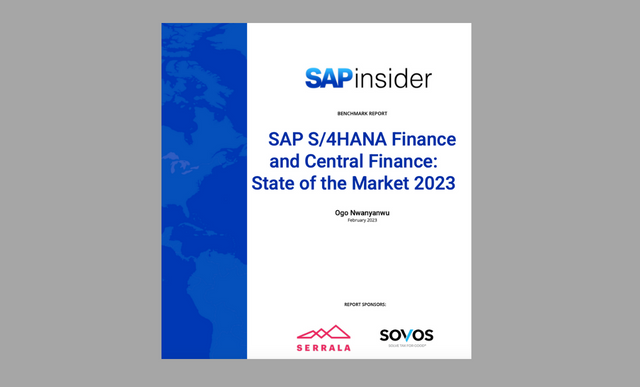Day 2 at SAPinsider SAP S/4HANA Summit 2023: User Insights Drive the Conversation
Meet the Experts
Meet the Authors
Key Takeaways
⇨ Day 2 of SAPinsider's Dallas Summit featured listening sessions designed for SAPinsider members to openly discuss their challenges, achievements, and pathways within the intricate SAP landscape
⇨ Conversation steered toward critical evaluations between private and public clouds, and SAP's push for cloud migration.
⇨ Attendees learned to prioritize transparent communication and training in change management
Day 2 at SAPinsider SAP S/4HANA Summit 2023: User Insights Drive the Conversation
The SAPinsider SAP S/4HANA Summit 2023 in Dallas, Texas, moved into its second day, focusing on user insights and experiences. It was particularly insightful with two separate listening sessions, one led by SAP finance expert Carsten Hilker and the other by myself. These sessions were designed for SAPinsider members to openly discuss their challenges, achievements, and pathways within the intricate SAP landscape, particularly emphasizing the transition to SAP S/4HANA.
Carsten Hilker Demystifies Finance Trends in SAP S/4HANA
The session “What’s On Your Mind?”, spearheaded by Carsten Hilker, acted as a navigational guide through the current finance trends in SAP S/4HANA. In the current business landscape, where digital transformation is pivotal to the success of enterprises, these discussions provided invaluable insights. It was intriguing to see how these complex topics were being navigated by various organizations and the innovative solutions they are employing to overcome challenges. Key themes such as Central Finance, cloud migration, multi-vendor ecosystems, product lifecycle management, and data privacy regulations were discussed in-depth. Here are the key takeaways:
- Centralizing Finance: A cornerstone of the discussion, Central Finance in SAP, emerged as the linchpin for enterprises grappling with fragmented systems. Hilker elucidated its proficiency in aggregating data from disparate sources, empowering businesses to forge single-source finance processes. The discourse further delved into real-world application, providing attendees with a nuanced understanding of scenarios where Central Finance transitions from a theoretical advantage to a practical necessity.
- Cloud Migration, Evaluating Options and Outcomes: The session didn’t shy away from the complexities of cloud migration. With businesses at the crossroads of digital overhaul, the conversation steered toward critical evaluations between private and public clouds. Hilker and participants together untangled the considerations influencing this pivotal decision, making it evident that a one-size-fits-all strategy is a relic of the past.
- Multi-Vendor Ecosystems: A significant shift from traditional practices, the trend toward multi-vendor partnerships was thoroughly examined. The insights shared highlighted the industry’s movement towards integration and interoperability instead of a reliance on single-source solutions. This approach not only fosters innovation but also fortifies resilience in operations, a theme that resonated with the attendees representing diverse sectors.
- Product Sunsetting: Anxieties around product sunsetting found a platform for clarification during this session. Participants gained insights into SAP’s strategies for phasing out products, particularly the contrast in handling widely used solutions versus less prevalent ones. The transparent dialogue here was a testament to SAP’s commitment to easing customer transitions during technology lifecycle evolutions.
- Navigating Data Privacy: One of the most pressing concerns for multinationals is the labyrinth of data privacy regulations across regions. The session was a deep dive into these turbulent waters, addressing companies’ challenges in synchronizing operations with varying regional laws. The emphasis was on proactive compliance, with GDPR and similar regulations taking center stage in the conversation.
- Flexible Deployment Strategies: From discussing the “big bang” approach to phased implementations, the dialogue acknowledged the myriad ways businesses embrace SAP solutions. These discussions were far from prescriptive, encouraging companies to assess their operational landscape and adopt strategies aligning with their unique trajectories.
- S/4HANA Cloud Strategy: The discussion around S/4HANA Cloud led to pragmatic conversations around migration, integration, and future readiness. Attendees departed with a clearer picture of their pathway with SAP, whether they were existing ECC customers or new entrants contemplating the transition from non-SAP ERP financial systems.
Voices from the Frontline
In my session, a combined business and IT team from a mid-market foundry company shared insights into industry-specific AS400 system utilization and posed questions about transitioning to SAP S/4HANA. This exchange opened the door to broader discussions about the challenges of change management and the importance of securing employee support during significant technology changes.
Attendees expressed a need for more practical guidance from SAP, feeling a gap in solid, actionable advice and a clear roadmap for navigating SAP system upgrades and transformations. The IT lead from a Fortune 500 retailer at the summit echoes similar sentiments.
A contentious issue was SAP’s strong push for cloud migration, which has been met with resistance, notably from entities that have recently transitioned to on-premises SAP S/4HANA. They are reluctant to engage in another substantial investment soon, a sentiment echoed by a major pharmaceutical company with over $11B in annual revenue.
The discussions explored the benefits of a more gradual approach to enterprise transformation, advocating for businesses to fully evaluate their current systems before diving into extensive, expensive modernization projects. This included the possibility of broadening partnerships beyond SAP and major system integrators to explore alternative approaches, especially for those not prepared for an immediate, full-scale move to the cloud.
Change management emerged as a recurrent theme, emphasizing the human factor in technological shifts. Ensuring employee readiness for new processes is crucial, impacting the outcome of tech adoption efforts. Additionally, companies must weigh the consequences of not updating systems, considering the shift in workforce dynamics, recruiting, and retention as experienced professionals with legacy system expertise phase out.
Day 2 of the Summit distinguished itself by elevating user voices and experiences, highlighting the real-world challenges in the SAP ecosystem, and underscoring the urgent need for practical, thoughtful, and user-oriented support. These sessions, characterized by their openness and collaborative spirit, provided the SAPinsider finance community with direct peer engagement, fostering a more profound sense of community united in their journey through the complexities of the move to SAP S/4HANA.
What does this mean for SAPinsiders?
Adopt gradual technology modernization aligned with business needs. Finance leaders should thoroughly assess their current systems to understand their capabilities and limitations in alignment with business goals. Instead of abrupt, full-scale system changes, consider a gradual implementation strategy for new technologies, which allows for risk mitigation, operational continuity, and adequate time for resolving any issues that arise during the transition.
Prioritize transparent communication and training in change management. Successful technological transformation requires transparent communication and active employee engagement. Finance leaders must clearly explain changes, their necessity, and their benefits to garner staff support. Providing robust training and continuous assistance helps employees adapt efficiently. Additionally, leaders should recognize the impact of technology decisions on talent recruitment and retention, preparing for the skills evolution necessary as legacy systems become obsolete.
Balance cloud migration with operational needs and explore multiple vendor partnerships. Finance leaders must critically analyze the suitability of different cloud service models for their organization, balancing the push toward cloud adoption with their specific operational needs and regulatory compliance. Exploring partnerships with multiple vendors rather than relying solely on single-source solutions can foster innovation and flexibility, offering alternative pathways for those not ready for an immediate comprehensive cloud migration.










